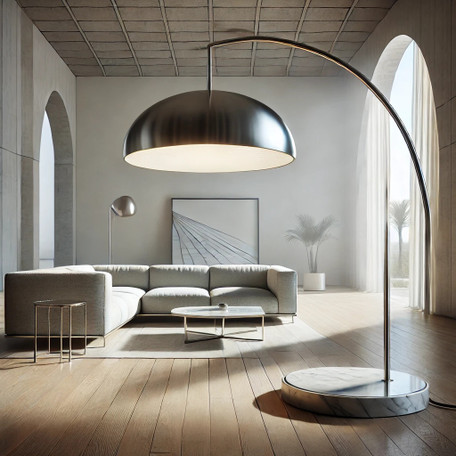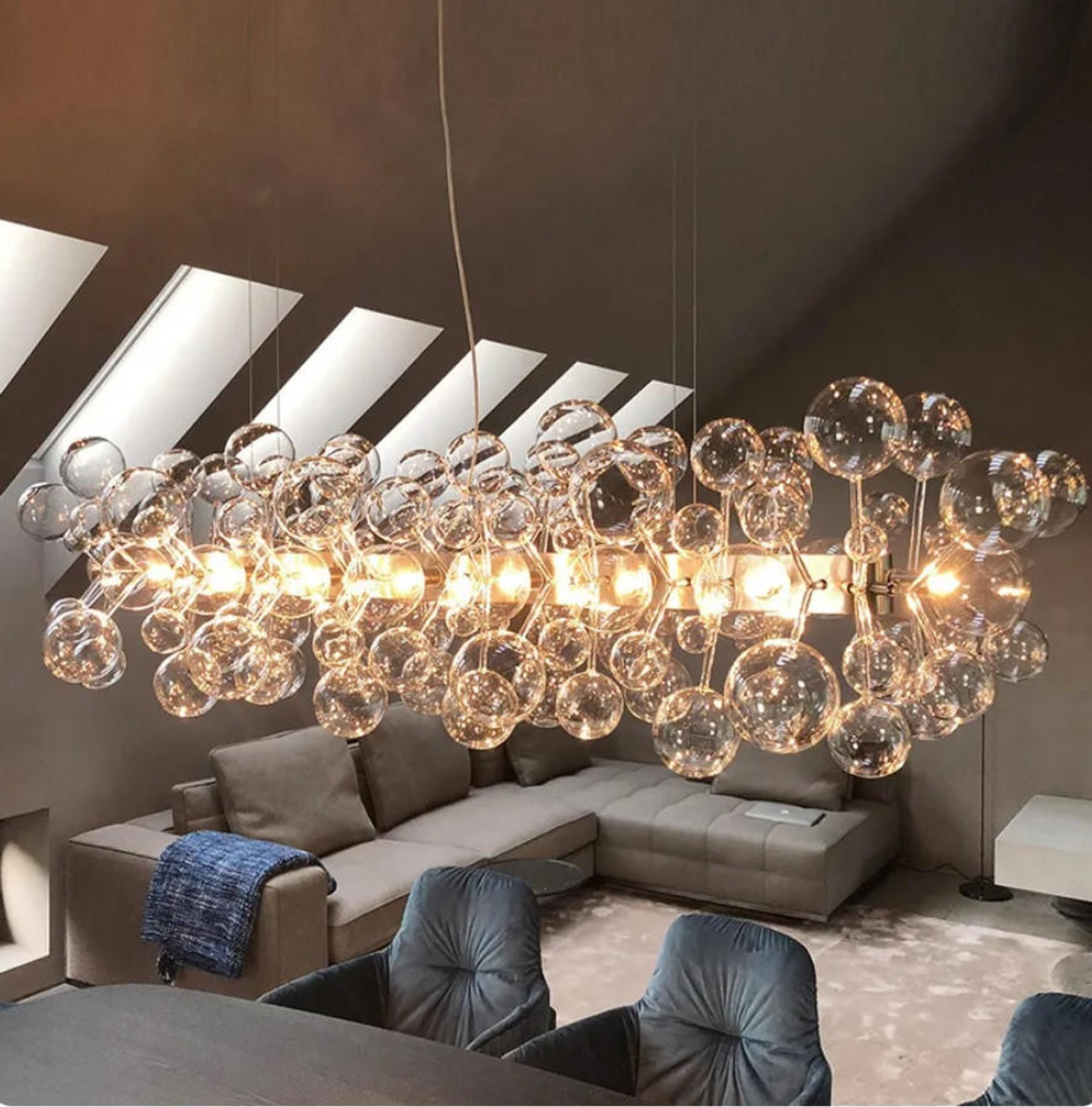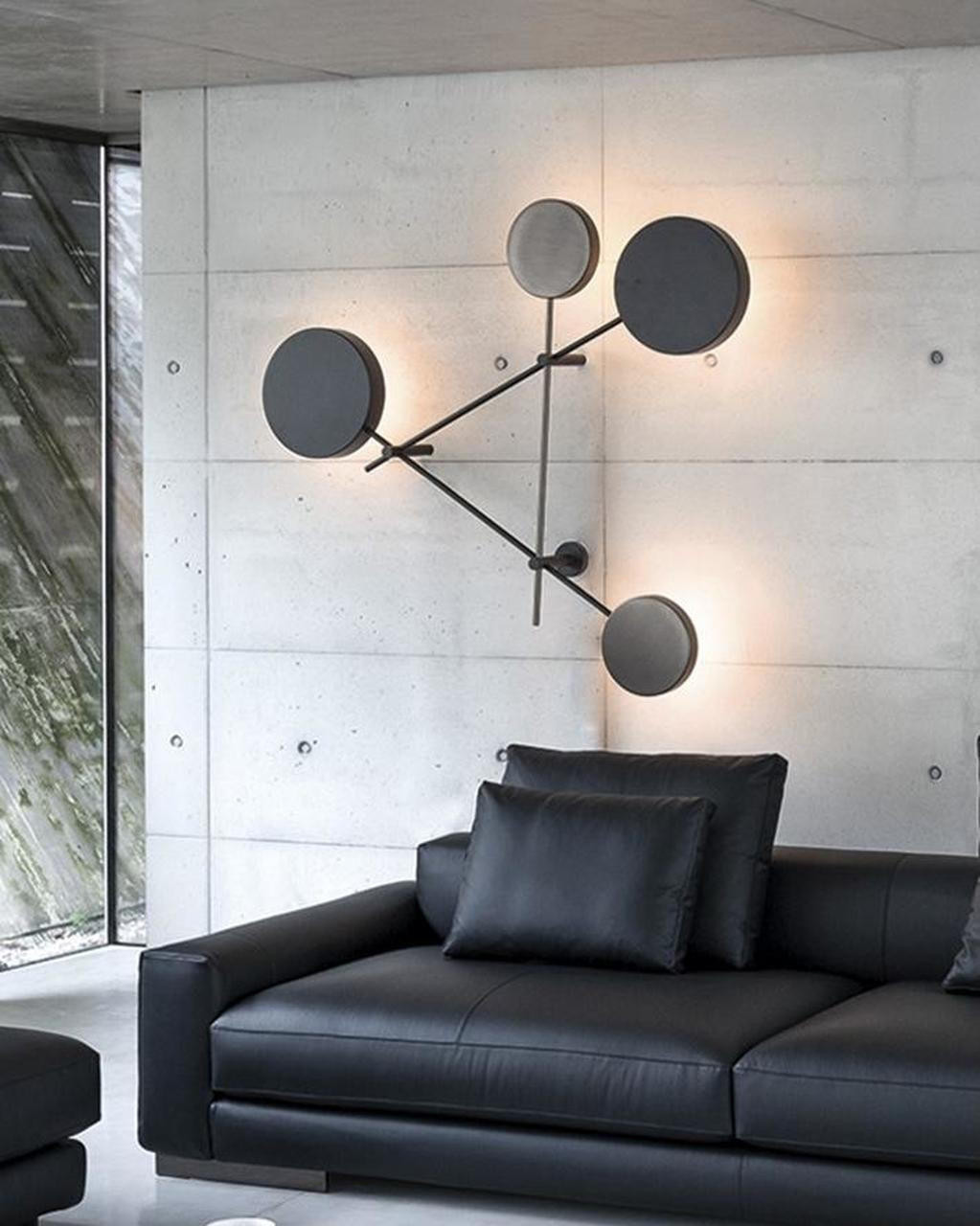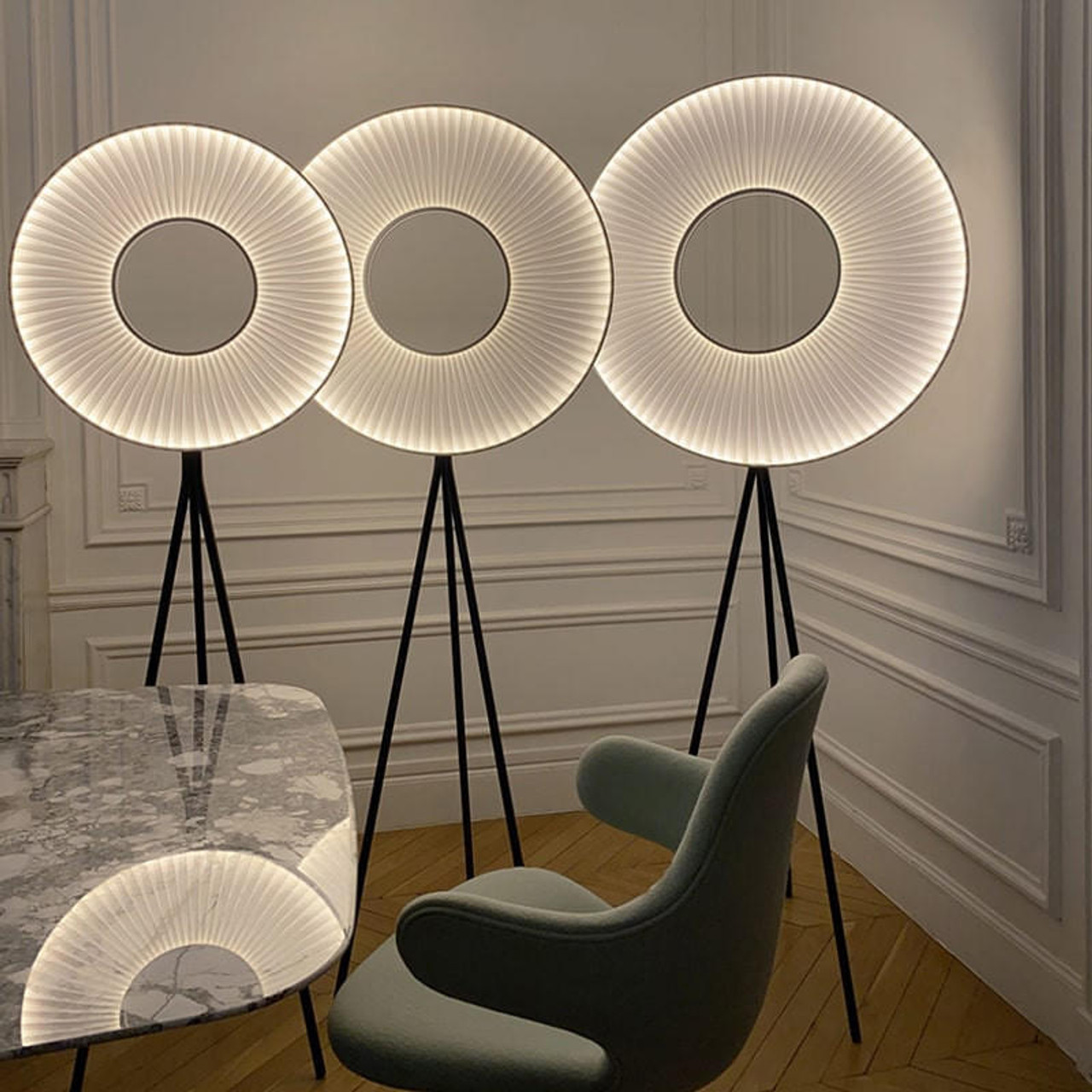Why Achille Castiglioni Designer Pieces Remain Icons of Contemporary Style
Posted by Rachel Parkinson - Architect on 9th Sep 2024
Why Achille Castiglioni Designer Pieces Remain Icons of Contemporary Style
In the expansive landscape of modern design, few names resonate with the enduring influence, vision, and ingenuity as Achille Castiglioni. Castiglioni, the Italian designer who actively shaped the design world from the mid-20th century until the 1990s, stands as a figure whose work transcends time and continues to impact contemporary style in a way that feels as fresh today as it did decades ago. His creations, ranging from lighting fixtures to furniture, are celebrated for their ability to balance functionality, simplicity, and artistic flair. It is no surprise that Achille Castiglioni Designer pieces have achieved iconic status, representing the epitome of intelligent design that maintains its relevance in today’s ever-evolving aesthetic landscape.
The secret to Castiglioni’s lasting appeal is found in his design philosophy — a principle rooted in blending utility with artistic expression, and simplicity with a layer of playful sophistication. Castiglioni once remarked, “Start from scratch. Stick to common sense. Know your goals and means.” This deceptively simple formula informed much of his approach, but underlying this clarity was a profound sense of humor, curiosity, and a genuine love for the everyday. In the same way that architectural critic Charles Jencks explored postmodernism through the concept of “double coding” — a way to infuse objects and spaces with layers of meaning — Castiglioni’s designs also operate on multiple levels. His works are, at their core, functional, yet they convey a more nuanced, intellectual delight that resonates deeply with today’s audience, just as it did during his lifetime.
The Intersection of Form and Function
Achille Castiglioni was a master of form and function, and this is central to why his designs continue to be celebrated across generations. The interplay of aesthetics and practicality, simplicity and surprise, defines his work and gives it a timeless quality. Many designers of the 20th century, particularly those who followed the doctrines of the Bauhaus movement or were influenced by figures like Le Corbusier, embraced the principle of “form follows function.” Yet, Achille Castiglioni Designer pieces transcend this rigid axiom by introducing playfulness and spontaneity into objects designed for everyday use. His pieces do not simply serve their function; they invite interaction, surprise, and joy in ways that challenge conventional notions of what industrial design should accomplish.
One of the most iconic examples of Castiglioni’s ability to marry form with function is the celebrated Arco Lamp (1962). This remarkable piece of lighting is more than just a source of illumination; it is a study in architectural balance, minimalism, and engineering prowess. Designed to provide overhead lighting without the need for ceiling fixtures, the Arco Lamp solved a common household problem while simultaneously introducing a sculptural elegance into the space. Its arching stainless steel arm extends gracefully from a solid marble base, allowing the lamp to project light over a significant distance. With its minimalist design, the lamp becomes both a functional object and a visual statement, highlighting Castiglioni's ability to infuse everyday objects with a sense of drama.
The Arco Lamp’s ongoing relevance speaks to the deeper layers of meaning embedded within its design. It is, as Charles Jencks might say, an example of “multivalence,” where an object carries multiple meanings: at once an ode to industrial materials, a reinterpretation of street lamps, and a product that engages with its environment through dynamic use of space and proportion. The simplicity and versatility of the Arco have allowed it to become a beloved piece across various design cultures, from minimalist interiors to more eclectic settings. The continued presence of the Arco Lamp in modern homes, offices, and public spaces demonstrates how Achille Castiglioni Designer pieces transcend trends, holding a timeless place in design history.
Playfulness as a Design Philosophy
Castiglioni had an eye for the everyday, and many of his most iconic designs are reinterpretations of simple, functional objects. This ability to turn the mundane into something extraordinary is one of the hallmarks of his career. Castiglioni often drew inspiration from the world around him, particularly in his use of found or repurposed objects. For him, design was not about creating something entirely new but about discovering new perspectives on familiar things. His designs, much like Jencks’ view of postmodern architecture, embody a “double-coding” of sorts, where an object is at once both serious and playful, practical and surprising.
The Mezzadro Stool (1957) is a prime example of Castiglioni’s talent for reimagining the everyday. Created in collaboration with his brother Pier Giacomo, the Mezzadro Stool features a tractor seat mounted on a sleek steel bar, stabilized by a wooden footrest. This whimsical fusion of an industrial object with a minimalist frame creates a striking juxtaposition that blurs the line between functionality and art. In typical Castiglioni fashion, the stool invites both curiosity and admiration. The Mezzadro is not merely a stool; it is an invitation to consider how industrial design can be elevated into the realm of high art without losing its practical roots.
What makes the Mezzadro Stool an enduring piece in the Achille Castiglioni Designer portfolio is its capacity to surprise. It evokes a sense of humor that is rare in the world of high design, where minimalism can often feel severe or sterile. By repurposing a familiar agricultural tool and placing it in a modern interior context, Castiglioni challenged the norms of taste and decorum. The piece exudes a quiet rebellion, not against function, but against the pretensions of high design. Today, the Mezzadro remains a beloved icon, celebrated by those who appreciate its subversive yet functional appeal.
Achieving Simplicity: The Power of Reduction
Though Castiglioni’s designs often featured playful elements, they were never overly complicated. He believed in stripping objects down to their essentials, creating designs that were both straightforward and profound. His ability to embrace simplicity is another reason why Achille Castiglioni Designer pieces remain so influential in today’s design world. He had a unique talent for distilling objects into their purest forms, but unlike some minimalists who fall into the trap of sterility, Castiglioni’s simplicity was always warm and inviting.
The Toio Floor Lamp (1962), another example of Castiglioni’s genius, exemplifies this philosophy. Constructed from a car headlight mounted on a slender metal frame, the Toio Lamp is an exercise in minimalism and industrial efficiency. But despite its stripped-down aesthetic, the lamp retains a sense of charm and ingenuity. There are no unnecessary details; every component has a purpose. And yet, the object doesn’t feel cold or mechanical. Instead, it invites the viewer to admire its elegant solution to a simple problem — how to direct light in a space with minimal materials.
Castiglioni’s approach to simplicity has particular resonance in contemporary design, where clutter and excess are increasingly rejected in favor of clean lines and functional forms. However, what sets Castiglioni’s simplicity apart from other minimalist approaches is his ability to inject personality into the design. The Toio Lamp, for example, is not merely an object of function, but a reflection of the designer’s personality and wit. It engages the user in a dialogue, asking them to appreciate the thought that went into its construction. As Charles Jencks often observed in architecture, great design is not just about form or function, but about creating objects that speak to their users on multiple levels. Castiglioni’s work exemplifies this, encouraging us to see simplicity as a powerful tool for communication, not just an aesthetic choice.
The Material as a Narrative
A key element of Achille Castiglioni Designer pieces is the innovative use of materials. Throughout his career, Castiglioni consistently employed industrial materials in surprising ways, elevating them from their utilitarian roots into something refined and elegant. For Castiglioni, the choice of material was never an afterthought. It was a critical component of the design process, often serving as a narrative element that enriched the object’s meaning. This approach aligns with Charles Jencks’ exploration of postmodern architecture, where materials are not just functional elements but are imbued with symbolism and meaning.
The Taccia Table Lamp (1962) is a striking example of how Castiglioni used materiality to enhance the narrative of his designs. The lamp, which consists of an industrial reflector mounted on an aluminum base, is an ode to the power of juxtaposition. By placing the rough, functional reflector in the context of a high-design object, Castiglioni invites the viewer to reconsider the relationship between luxury and utility. The Taccia Lamp is both a commentary on the material culture of the time and a bold statement of how design can elevate the everyday.
Similarly, the Luminator Floor Lamp (1954) showcases Castiglioni’s mastery of material economy. Constructed from little more than a painted steel pipe, the Luminator is a study in minimalism and efficiency. But despite its Spartan appearance, the lamp has a striking presence, thanks to its bold color and minimalist construction. The use of industrial materials in such a refined way reflects Castiglioni’s ability to create beauty from the simplest components. This focus on materiality not only anticipates many of the trends that would come to dominate 21st-century design but also ensures that Castiglioni’s work remains relevant in a world increasingly concerned with sustainability and resourcefulness.
A Timeless Approach in an Age of Flux
In a world where design trends seem to shift with every passing season, the enduring popularity of Achille Castiglioni Designer pieces is a testament to their timelessness. Castiglioni’s work transcends the temporal nature of fashion, rooted instead in principles that continue to resonate with modern audiences. His ability to craft objects that feel both modern and timeless is perhaps his greatest achievement. Castiglioni’s designs do not belong to a specific era; they exist in a space where past, present, and future converge seamlessly.
This timelessness aligns with Charles Jencks’ concept of postmodernism as a paradoxical mixture of the timely and the timeless. Castiglioni’s designs respond to the needs of their time, yet they do so in a way that feels universal and enduring. The forms are simple, the materials are honest, and the ideas behind them are both intelligent and whimsical. As we navigate an increasingly complex and uncertain world, Castiglioni’s designs remind us of the power of simplicity and the importance of crafting objects that serve both functional and emotional needs.
Take, for instance, the Snoopy Table Lamp (1967), which combines playful design with cutting-edge materials. Inspired by the cartoon character Snoopy, the lamp’s shape is both humorous and elegant, marrying a whimsical form with technical sophistication. Its glossy enamel shade and sturdy marble base create a sense of balance between lightness and solidity, humor and elegance. This piece exemplifies the kind of design that Castiglioni was known for: something that is at once functional and filled with character.
Today, designers, architects, and tastemakers continue to draw inspiration from Castiglioni’s work. His influence can be seen in the emphasis on material reuse, the focus on creating long-lasting designs, and the prioritization of user-centered functionality. Castiglioni was ahead of his time, anticipating many of the movements that now dominate the design landscape, including sustainability, minimalism, and the importance of creating objects that encourage interaction and engagement. His legacy endures, not just in the specific objects he created, but in the way he approached design as a whole — with curiosity, humor, and a deep respect for the potential of the everyday.
Conclusion: Castiglioni’s Lasting Legacy
The legacy of Achille Castiglioni Designer pieces is vast and enduring. His designs are more than relics of mid-century modernism; they are living objects that continue to inspire, engage, and delight. Castiglioni's work was never about chasing trends but about understanding the needs of people and creating objects that could meet those needs with grace, elegance, and a touch of humor. His pieces are timeless, not because they adhere to a particular style, but because they embody a way of thinking about design that feels as relevant today as it did during his lifetime.
As we continue to explore new frontiers in design, sustainability, and material innovation, Castiglioni’s work stands as a reminder of what great design can accomplish. His approach — rooted in simplicity, curiosity, and playfulness — offers a valuable lesson for designers today: that the best designs are those that are both functional and meaningful, elegant and accessible, timeless and yet always fresh.
In the end, Achille Castiglioni Designer pieces are more than just beautiful objects; they are icons of contemporary style that will continue to shape the future of design for generations to come.





